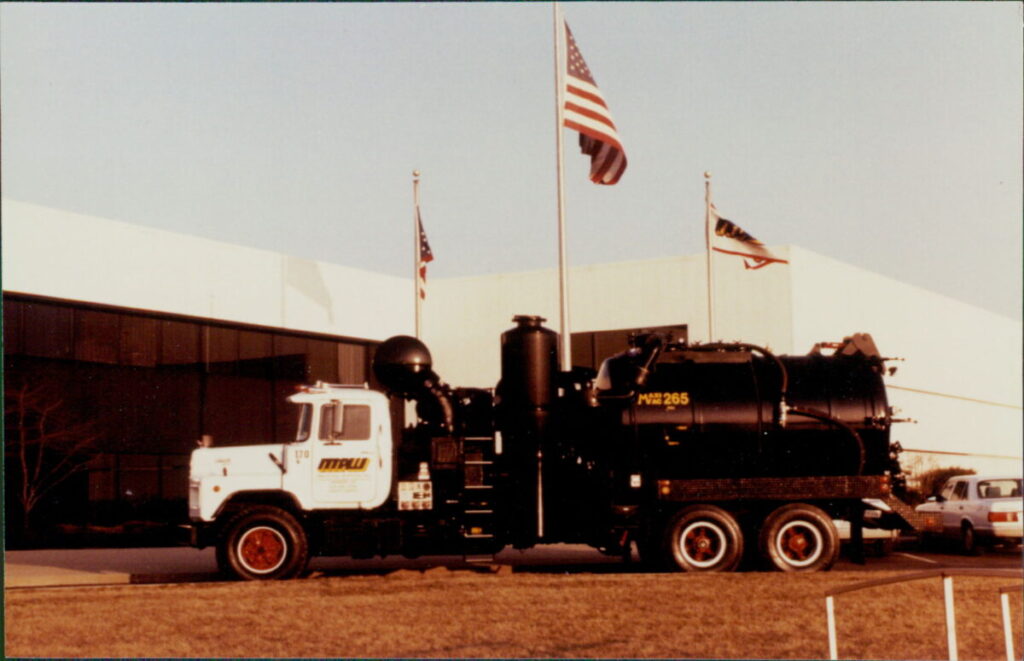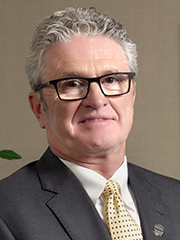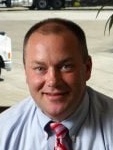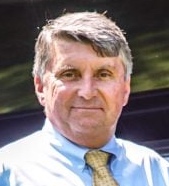
MPW’s entrance into industrial vacuuming is a story of entrepreneurship and innovation. It begins with the City of Columbus facing a challenge at its waste transfer stations. Trash would fall from conveyor belts and become a fire and safety hazard. The city looked for help to clean the conveyors. Several companies, including MPW, bid the project, each ready to send crews carrying shovels and brooms—except for us.

We proposed the use of a vacuum truck, which could complete the cleaning much more efficiently with a smaller crew. A vacuum truck was a unique solution at the time. “That’s what differentiated us,” said MPW Owner and Founder Monte Black, and MPW landed one of its first multi-year industrial vacuuming contracts. The crews would clean the material that fell from the conveyor belts overnight from 11 p.m. to 7 a.m., five days per week.
Our fleet was growing to include wash trucks, water-blasters and vacuum trucks. We had accumulated 13 wash trucks before purchasing Unit 14, our first vacuum truck. We continued to build our vacuum truck fleet with units 15 through 17. We were always looking for more equipment, while at the same time picking up new customers and hiring more people. We were running wide open. It was challenging but so much fun!
After we successfully completed a job at the Columbus and Southern Electric Company’s Conesville generating station, the phone kept ringing. Conesville asked us to clean a coal reclaim pit. The emergency job required roughly 400 feet of vacuum hose going into what was basically a huge basement full of coal and equipment.
The Conesville coal reclaim pit was a major opportunity. “We found a way to service the plant with our existing fleet,” Monte said. To maximize use of crews and equipment, Unit 14 would go to Conesville from 9 a.m. to 7 p.m. to help clean the reclaim pit after it finished its night shift in Columbus.
We ran all the vacuum trucks around the clock. It was fun, challenging and profitable. At times we would even have our mechanics service our equipment at plant sites. We couldn’t afford the lost time to take it back to the shop.
We worked hard to serve our customers as the company grew. We continued to invest in equipment and people to meet our growth opportunities.
Today, we have a fleet of several hundred vacuum trucks with Mack chassis and Super Products vacuum systems. We standardized our fleet of trucks for ease of repair and operator training long before Southwest Airlines standardized its fleet of planes. Our standardization was the beginning of a long-term relationship with Mack that helped foster innovation and productivity.
In addition to Conesville, Columbus and Southern Electric (which sold out to AEP) had several generating stations, and we were household names in all of them. It was good work, and with those opportunities came competition. Years ago, like today, our initiatives and engineering skill allowed us to stay ahead.
One way we used innovation to beat the competition was with vacuum pipe selection. Our competitors were using 6-inch flex pipe for their vacuums while we used 8-inch hard pipe to optimize performance and outdo our competitors.
We took every advantage we could to increase productivity and reduce cost. Industry competitors were using aluminum dredge pipe, which was expensive and wore out quickly when vacuuming abrasive material. We did our own research and began using HDPE (high-density polyethylene pipe) for all abrasive materials and non-heat-related jobs.
We used heavier walled pipe for heat-related vacuuming and purchased our aluminum directly from the manufacturer for cost-savings. And then, we fabricated our own 20-foot pipe sections and vacuum ends. As a result, we increased our pipe’s longevity.
Innovation and professionalism set us apart. Crews always cleaned up the work site area after a job was completed. Another innovation was placing racks on our pick-up trucks to haul materials faster and more efficiently. Our trucks were clean, our crews looked more professional than the competitors and we took pride in our work.
“We would not take short cuts,” Monte said. “We were never satisfied, and we were always striving to be the best in the business. Whether we were washing trucks, water-blasting or vacuuming we always had great equipment and our own approach to the work, but it was always the people who made the difference, then and now.”
Our goal was to give the customer a little more than what they expected, so we could come back to do more. The work was challenging, and the days were long, but we always found a way to keep FUN in the equation. That’s what driven the growth of the company for the last 50 years!
Our Steubenville Operations Manager Gary “Moe” Berger had a famous line. He’d always say, “MPW vacuums; the competition sucks!”
And then there was the time a large Pennsylvania steel mill hired MPW to clean a blast furnace. The purchasing agent insisted we needed to send 20 vacuum trucks to the cleaning job because that’s how many trucks the previous companies sent. But we didn’t need 20 trucks. We rode in with 15 trucks and completed the job to their satisfaction, which got everybody’s attention. “If the plant wins, everybody involved wins,” Monte said.

Industrial vacuuming procedures demand respect. Without the proper safety equipment and training, there are dangers. We are focused on industrial vacuuming safety, just like all our services. “Don’t lose your fear of this; this is real,” said General Manager Jimmy Peck. “I don’t think the industry as a whole has given as much attention to industrial vacuuming as MPW has.”

MPW uses safety tools like Newson Gale devices and Safety T valves. High-tech robotic crawlers, with vacuuming and water-blasting technology, are increasingly used to enter tanks, large pipes, and other hazardous environments. “We’ll see more and more uses for the robotic crawlers,” said VP of Operations Dave Brown. Our employees are adapting to new technology by learning to clean with advanced automated systems instead of relying on traditional methods. As an organization today, we are well positioned—with our strong workforce, and our engineering, IT and training departments working hand-in-hand with operations—to look for new initiatives and find more productive ways to serve our customers.